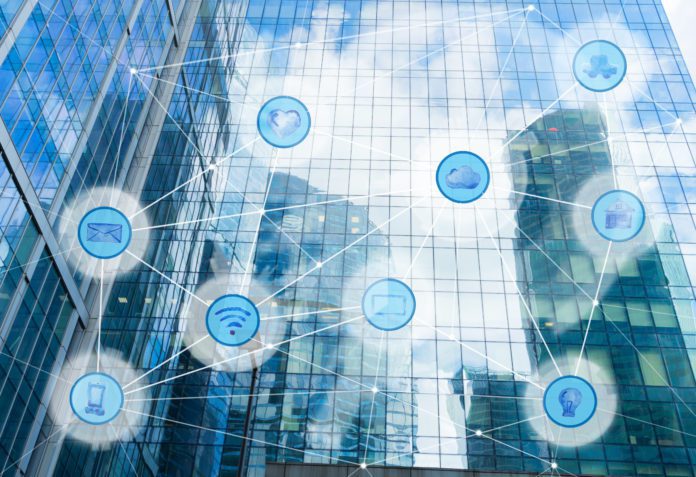Hitachi Elevator (China) Co. is currently focused on the development of a smart building ecosystem by combining big data, IoT and AI, among other technologies.
During the recent 2019 Innovation Sharing Meeting, the company highlighted that the elevator-based smart building ecosystem is emerging as elevators become a gateway to various application scenarios in modern buildings.
The company said that the smart building ecosystem being built by Hitachi Elevator can solve different issues such as the frustration of waiting too long for the elevator to arrive or not being able to board because the elevator is already full. “Whether an office worker or a resident, those who must take elevators hope that such “traffic jams” can be avoided, while property managers are increasingly eager to?manage the security system, energy and equipment in a building efficiently,” the company said.
Hitachi Elevator also said it aims to provide a wide range of buildings with custom-designed multi-directional in-building transportation solutions and creating high added-value intelligent products and services for more in-building elevator scenarios.
Hitachi Building Technology (Guangzhou) Co. general manager Guo Weiwen said he foresees a future where a building manager has constant access to data on the operation of the elevators, the movement of people, and the status of the equipment in the building against the backdrop of the building layout, and to be able to do so while seated in front of a PC or, while moving about, on a mobile device.
?AI helps to analyze wait times, level of congestion and the number of people waiting?for elevator, and use the information to decide which of six custom elevator operation modes to deploy, including peak traffic and nighttime nonstop modes. An AI-based recognition camera monitors the operation of elevators in real time, in addition to providing an instant alert when an elevator stops functioning or passengers become trapped or get into an altercation while?in elevator, among other unexpected situations,? the company said.
?With the rapid development of robotics around the world, the demand for robots that are able to move vertically is also increasing. In order to respond to this demand, Hitachi Elevator has developed customized robot interfaces and become one of the first companies in the elevator industry to create scenarios that allow for the vertical movement of service robots. The solution is suitable for many kinds of such robots, as among them, meal delivery, people guides and freight handling.?
Currently, Hitachi Elevator has completed the implementation of scenarios for service robots in seven locations: Alibaba Future Hotel, Vanke Center,?Xiaomi Science?and Technology Park, Huawei Songshan Lake Base Training Building, Alipay Building, JD.com headquarters Base R&D Center and the?First?Affiliated?Hospital?of?Zhejiang?University. Another 13 projects involving hotels, office buildings and factories, among other scenarios, are also in progress. Hitachi Elevator has agreed on protocols for robot docking with many robotics manufacturers and participated in the formulation of robot interface standards for the industry.
Hitachi Elevator also said it is currently working with its partners to create solutions that allow for the interaction between elevators and other?equipments?in buildings.

